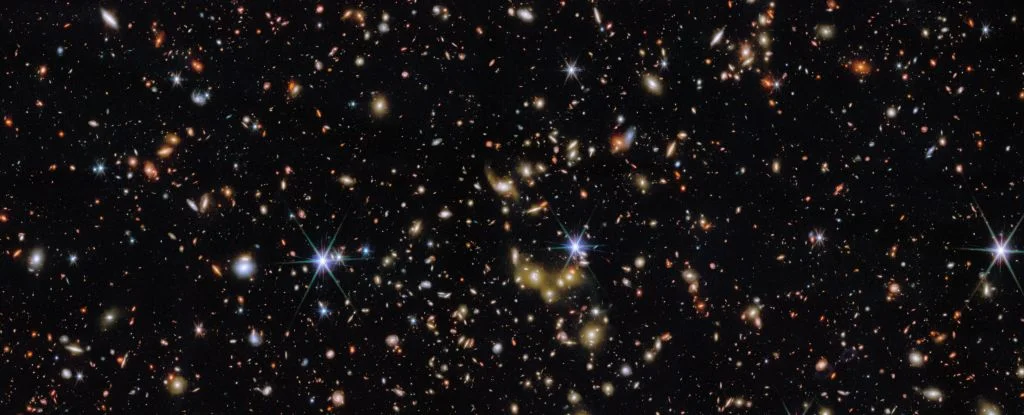
JWST Unveils a Universe of Galaxies: One Image, Countless Discoveries, and a Call for Citizen Scientists
Prepare to have your mind blown! The James Webb Space Telescope (JWST) has released a stunning deep field image, revealing a breathtaking panorama of galaxies stretching back nearly 12 billion light-years. This tiny patch of sky, smaller than a fifth of the full Moon, is absolutely teeming with glittering lights, almost all of which are entire galaxies.

Unlike conventional images where stars dominate, JWST's image primarily showcases galaxies. How can you tell the difference? Stars exhibit distinctive diffraction spikes, an artifact of JWST's optics, while galaxies, being less concentrated light sources, lack this feature. A concentrated group of golden-hued galaxies, whose light has traveled 6.5 billion years, holds center stage in this cosmic ballet.
This observation is part of the COSMOS-Web survey, an ambitious project cataloging galaxy groups to unravel the universe's evolution, including the enigmatic cosmic web. The project leverages data from JWST, the Hubble Space Telescope, and ESA's XMM-Newton space observatory. X-ray data from the Chandra X-ray Observatory reveals the immense scale of these galactic clusters. The sheer number of galaxies identified is astonishing: an international team led by astrophysicist Greta Toni identified 1,678 galaxy groups within this small area.
The galaxies themselves display a breathtaking variety. Spiral arms intertwine with warped disks, featureless faces contrast with interacting and merging forms. The colors themselves hold clues: bluer hues indicate younger stars, while redder tones signify older stellar populations and greater distances. The more distant a galaxy, the redder it appears.
In addition to the stunning visuals, NASA is calling upon citizen scientists to participate in the Galaxy Zoo project. By classifying the shapes of galaxies in JWST images, volunteers can help scientists understand how these shapes have evolved over time. The project team also works with an AI algorithm called ZooBot, which helps sift through the images, and leaves more complex examples for users on Galaxy Zoo to classify.
"I'm amazed and honored to be one of the first people to actually see these images! What a privilege!" said volunteer Elisabeth Baeten from Leuven, Belgium.
JWST's observations reach back further in cosmic history than ever before, offering glimpses of some of the earliest galaxies. Analyzing their shapes provides insights into their birth, star formation, and interactions with neighboring galaxies.
Ready to contribute to space exploration? NASA invites you to join the Galaxy Zoo project and help classify these distant galaxies! What mysteries will you uncover? Share your thoughts and discoveries in the comments below!